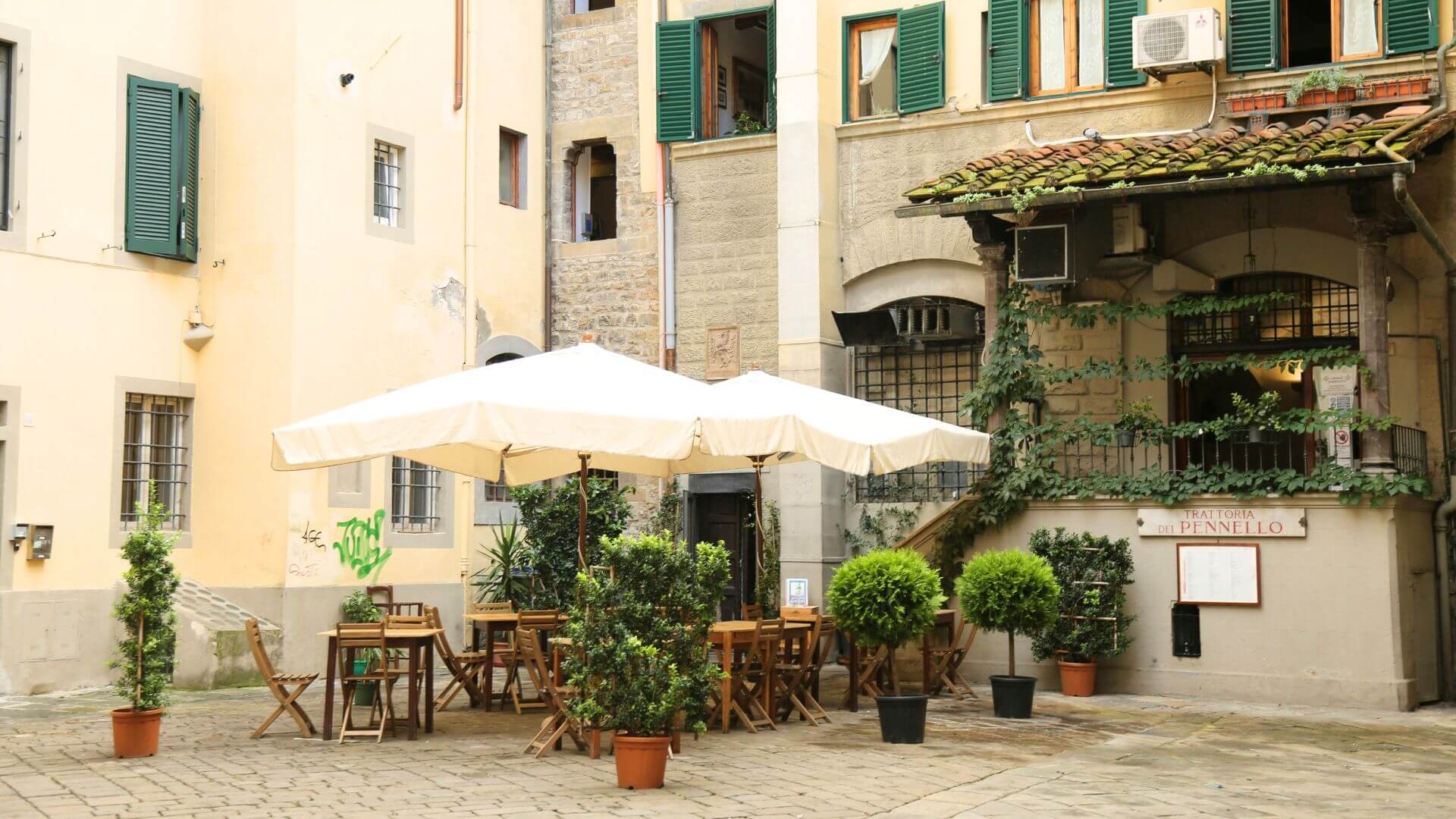It goes without saying that one of the best things about Italy is its traditional cuisine. And it seems like nothing can be simpler than enjoying this aspect of Italian culture, as the popular destinations aren’t lacking options for dining out. But in reality, there are a few things you need to know before picking out the venue, and one of them is the difference between the kinds of Italian restaurants. If most people know exactly what a pizzeria is, seeing places like otteria and enoteca might raise a few questions.
A Brief Guide to the Kinds of Italian Restaurants
Why Is It Important to Know the Difference?

Before we start, let’s talk about why it’s a good idea to know what hides behind the fancy classification. And the most obvious reason is that you would know what to expect. Not only in terms of the menu and service, but also in terms of prices. For example, if you are all dressed up, feeling gorgeous,and looking forward to enjoying the sweet harmony of perfection that a fine dining experience in an excellent restaurant brings, picking an osteria venue is not the way to go. However, osteria will be a solid option to consider for a family looking for a place to have a quick, budget-friendly lunch. Knowing the most common types of venues will allow you to leave fewer choices to guesswork and be more in control of your experience.
Ristorante
Let’s start at the high end of the spectrum. A ristorante is a place to go when you feel like treating yourself to a fine dining experience, and, in a nutshell, this type is what comes to mind when someone asks you to picture a very good restaurant. It is the most formal kind of venue in Italy that implies a certain level of class: an evening attire, multi-course meals (appetizers, several courses, and desserts), full-table service, and relatively high prices. Plus, keep in mind that meals typically last for hours, so it’s not a great choice if you are short on time.
Trattoria

Moving a bit down on the scale of fanciness, we get trattoria. You can expect the same high level of service as from ristorante, but trattorias are usually smaller, more affordable, and located off the main streets (so the chances of running into the tourist trap restaurants are significantly lower). Another important distinction is that these venues are almost always family-run and specialize in home-cooked traditional meals, often based on old family recipes. As you can imagine, the food is not only delicious but also as authentic as it gets. The atmosphere in trattorias is usually lively and informal, and they have a knack for making everyone feel welcome.
Osteria
Now we are entering the territory of casual dining, although the line between a trattoria and an osteria might be a bit blurry. This category is known for budget-friendly prices, a simple but welcoming atmosphere, and an accent on good wines rather than a wide choice of dishes. As a rule, you can still expect full service, but the menu is quite small and consists mostly of appetizers with a few options for the main dishes. The food is unpretentious, but as Italian cuisine is all about creating incredible flavors from the most basic ingredients, you can rest assured that the meal will be delicious. The same goes for the choice of local wines; it might not be very big, but the wines are exquisite and very affordable.
Pizzeria

Now, this is a category that doesn’t need much introduction at all. As you can guess, pizzerias are usually the places to look for the best pizza, the backbone of Italian cuisine. Don’t get us wrong, it’s not the only place where you can get pizza. Most restaurants have a few positions on the menu, but pizzerias are all about this iconic dish, and some historical venues are still making pizza according to century-old traditions. While Italian style dictates that everyone get their own pizza rather than order for the table, you can sometimes see venues offering “pizza al taglio,” aka ”by the slice.” The sitting is usually either absent or very limited, but don’t worry, you get your pizza wrapped in a convenient piece of cardboard or wax paper, so you can eat it on the go.
Bar
As you might remember, we’ve already briefly talked about bars when discussing tips on dining out in Italy, but let’s go through the basics one more time. This category leaves room for misinterpretation, as a bar in Italy is not a business focused on alcoholic beverages but something much closer to a cafe. Bars serve a wide selection of non-alcoholic as well as alcoholic drinks and some on-the-go food like pastry and sandwiches. The locals usually go to the bars to get their coffee fix (that they famously drink at the counter) or to sit with a glass of aperitivo in the evening in pleasant company.
Enoteca

Historically, enoteca was a venue dedicated solely to wines in all their glory, and they boasted a truly impressive choice. You could pop in to get a bottle for dinner or meet with a friend for a few glasses, but there was nothing else on offer. Nowadays, a lot of enotecas have added a small appetizer menu to go with wines, but the format of the traditional enotecas hasn’t changed much over the years. As a rule, the venues are very small and have no seating at all or offer a few tables somewhere in the corner, so we wouldn’t plan anything but a brief visit.
Tavola Calda
These types of venues are distant relatives of bars, as all tavola caldas offer the menu of the average Italian bar, but in addition to on-the-go food, such as sandwiches and pastries, you can get something from a small selection of pre-prepared hot dishes, like pasta or risotto, that you need to queue for with a tray (yes, good old school cafeteria style). Everything was made on the same day from fresh local ingredients, and you can count on the food being very good. Many big supermarkets have tavola caldas sections, or you can find them around town as independent establishments.
And this is it; now you’ve mastered the difference between the most common types of eateries in Italy. Of course, this is not a full list; there are also paninotecas (sandwich bars), pasticcceria (pastry shops), and many other kinds we haven’t covered in the article. But what we discussed is a solid base that will help you navigate the abundance of restaurants in Italy and make an informed decision when picking a venue for dinner. In return, we ask you for one thing: make sure to put this knowledge into practice. After all, if you haven’t been gorging on world-renowned pizza and pasta as well as less-known regional specialties every evening, have you really been to Italy?





